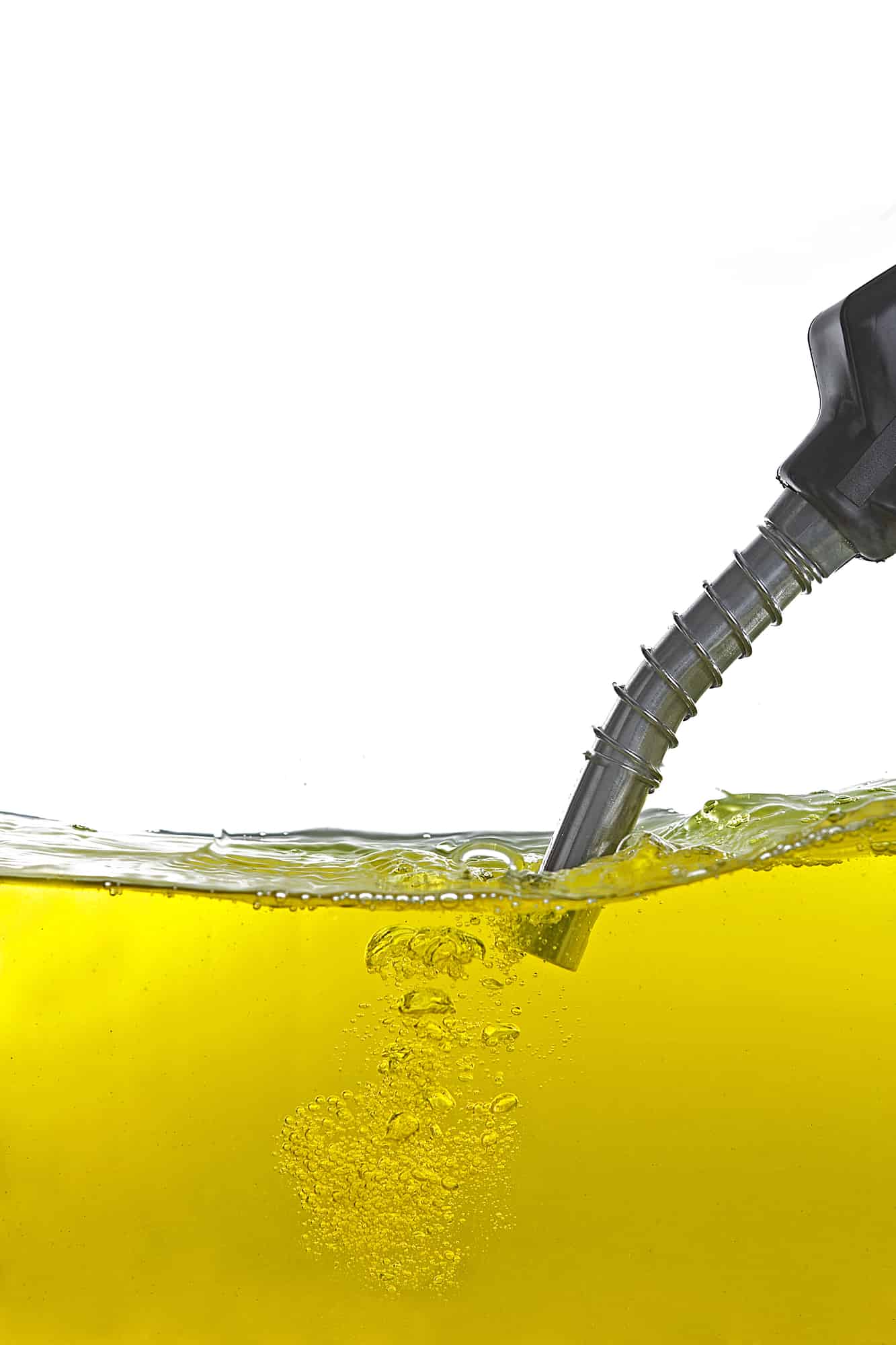P0455 Error Code Explanation
- P0455 Technical Definition: Evap System Large Leak Detected
- P0455 Meaning: A possible leak in the fuel vapor system
- Most common cause: Loose fuel filler cap
- Risks for the engine/driver: Low Risk Get your car checked out as soon as possible
- Emissions severity: HIGH.
The car won’t pass emissions testing
- Estimated repair time: 1 days
- Estimated repair cost: $80 to $100
What Does Engine Error Code P0455 Mean?
The OBD2 error code P0455 is stored in memory when the ECU detects a leak in the Evaporative Emission System (EVAP).
The evaporative emission system is an integral part of the emissions control system. Its job is to prevent fuel fumes from reaching the atmosphere.
As an Amazon Associate we earn from qualifying purchases.
These gases are the normal result of fuel evaporating inside the fuel tank.
The evaporative emission system consists of a sealed container (fuel tank) that works in conjunction with one or more charcoal canisters that purge the gases back to the engine when the ECU consider it appropriate.
Besides controlling the EVAP solenoids the Electronic Control Unit has a dedicated pressure sensor in the fuel tank (like the MAP sensor). This sensor is constantly informing the ECU about the fuel vapor pressure in the tank.
The data trouble code P0455 is set when the ECU senses a possible leak in the EVAP system, in other words, an abnormal fuel vapor pressure.
Common Symptoms When P0455 Is Present
The symptoms of OBD2 error code P0455 may not always be obvious to the driver.
The most common symptoms of data trouble code P0455 are:
- Check Engine Light flashing.
- Smell of gas coming from the vehicle
Possible Causes For P0455
The most common causes of data trouble code P0455 are:
- Aftermarket gas cap that doesn’t meet OEM specifications.
- Improperly closed gasoline cap.
- Faulty gas cap.
- Burnt, damaged, broken or deteriorated EVAP hose.
- Fuel tank pressure sensor wiring (open, shorted, burnt)
- Fuel tank pressure sensor connector (loosely, corroded, disconnected or bent pins)
- Bad or deficient fuel tank pressure sensor
- Defective fuel tank seal.
- Defective EVAP canister
- Defective or faulty EVAP purge solenoid
What are the Differences Between a Gross Leak and a Small Leak in the Evaporative Emission System?
A gross leak in the evaporative emissions system refers to a large crack or hole in the system, leading to a significant loss of fuel vapor. On the other hand, a small leak involves a minor breach that results in a smaller loss of fuel vapor. It’s crucial to address any evaporative emissions system leak promptly to prevent environmental pollution and ensure proper vehicle performance.
How To Diagnose The Cause Of P0455
For the purpose of this article, it’s assumed that you have a basic knowledge of safety precautions while working on your vehicle.
Always refer to the appropriate OEM literature when possible. Original manufacturer diagnostic procedures should always have precedence over a generic workflow.
That said, let’s start the diagnostic process!
1. Preliminary steps
To discard a possible intermittent DTC condition, you’ll need to clear the ECU memory and complete a driving cycle.
- Read data trouble codes and take note of them.
- Clear data trouble codes memory.
- Perform a driving cycle (at least 5-10 minutes).
In case the Check Engine Light stays off then you may have an intermittent problem. If the light lit during your driving cycle then continue with the diagnostic process.
2. Visual Inspection
> Gas Cap inspection: perform a meticulous visual inspection of the gasoline cap. Check its seal condition. Change as needed.
Double check the part number and pressure specifications. Modern gas caps have similar specifications to radiator caps, using the incorrect part can cause the same issue.
> EVAP hoses: perform a meticulous visual inspection of all Evaporative Emission system hoses.
These hoses come from the fuel tank all the way through the EVAP canisters and then from the canister they go to the intake manifold. Check for loose clamps, deteriorated hoses, etc. Don’t overlook this step.
Many times the code P0455 is caused by a large leak in one of these hoses.
> Fuel Tank Pressure sensor inspection: perform a meticulous visual inspection of the fuel tank pressure sensor wiring and connectors.
Look for burnt, damaged, corroded or deteriorated wires, also unplug the sensor and look for bent terminal pins, loosely connections, corrosion or any other possible indication of a bad connection.
Fix any wiring problem before continuing.
3. Scan Tool Tests
> Fuel Tank Pressure sensor test: for this test, you will need to access the fuel pump assembly.
Depending on your vehicle this could be as easy as removing the rear seat row but in some cases, you may need to remove the fuel tank which isn’t an easy task. Please keep that in mind before starting the test.
Assuming you have access to the sensor, remove it from the fuel pump assembly. This sensor is like the Manifold Absolute Pressure sensor (MAP). Turn the ignition key on (engine off).
Using the relevant adapter connect a manual vacuum pump to the sensor port. Now you can increase the pressure (positive pressure) or create a light vacuum using the manual pump.
With the help of a scan tool, watch the sensor output as you vary the pressure. If no change is detected then you should check the wiring from the sensor to the ECU. This is an analog sensor, start verifying the 5V reference voltage and ground.
An alternative method that doesn’t require accessing the fuel pump assembly is disconnecting one of the fuel vapor vent lines. You can pressurize/depressurize the tank through that hose using a manual vacuum pump.
Never use compressed air for this task because is highly dangerous.
> EVAP functional test: start the engine to enter KOER mode. Depending on the year and maker of your vehicle you may have access to EVAP functional tests. The functional test consists in opening/closing the EVAP purge.
If the solenoids are not working then you should check the wiring, connector, relay, and fuse.
How To Repair P0455
Depending on the diagnostics results you may need to do the following:
- Repairing fuel pressure sensor wiring and/or connectors.
- Replacing the fuel cap.
- Replacing the fuel tank seal.
- Replacing or repairing the EVAP hoses.
- Replacing the fuel tank pressure sensor.
- Replacing or repairing the purge solenoids, relay or fuse.
Even when this code doesn’t affect engine’s performance you need to be aware of legal issues when driving in zones with strict emissions regulations. Fuel vapor smell will instantly make you fail emissions regulations.
As an Amazon Associate we earn from qualifying purchases.




